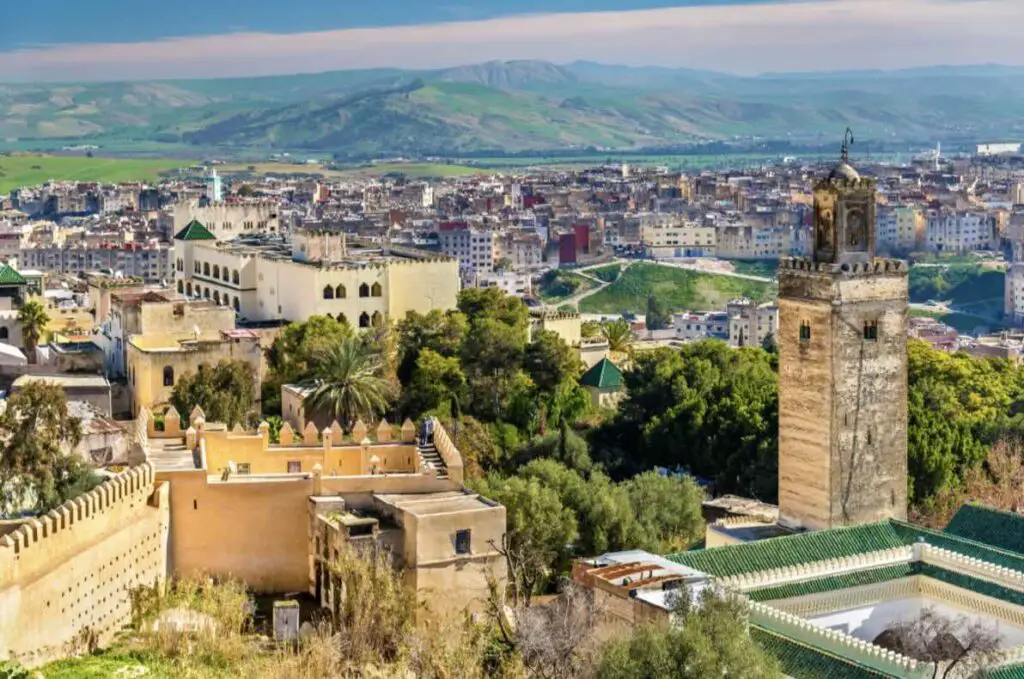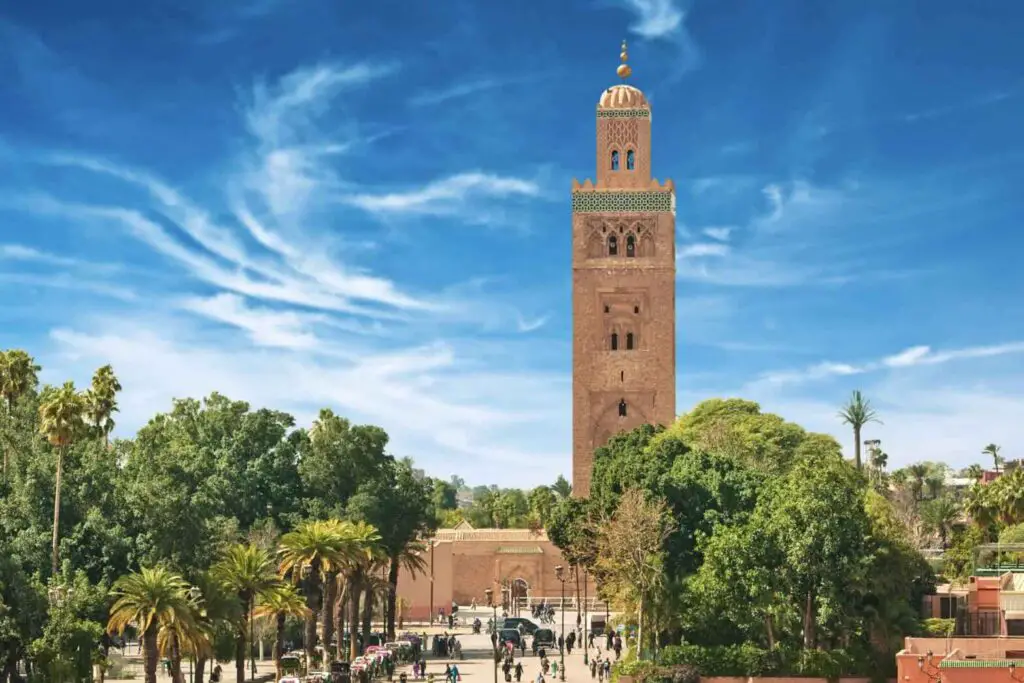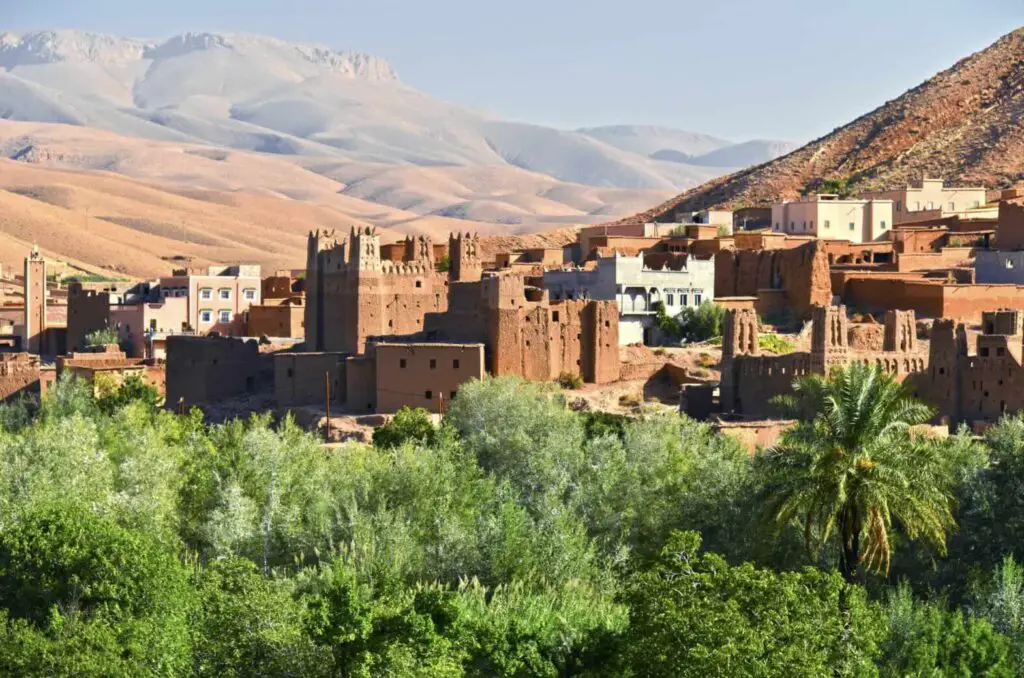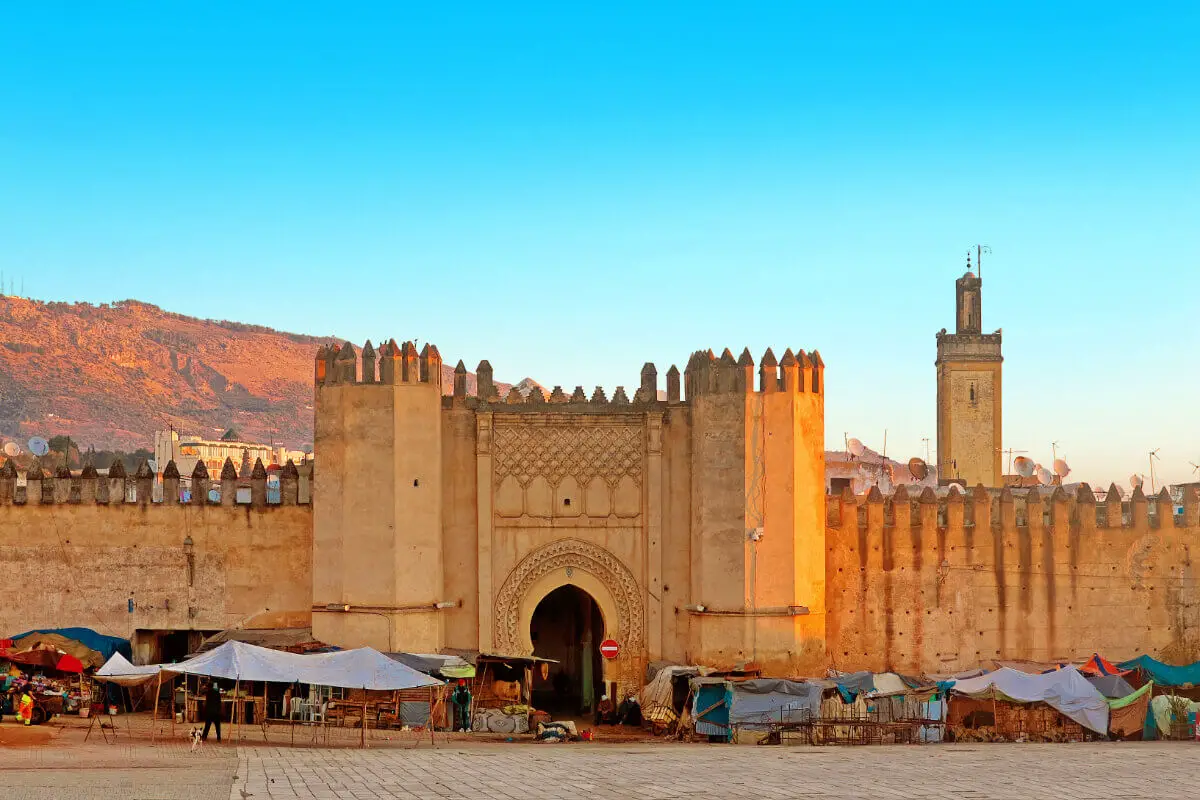Perched at the crossroads of Africa, Europe, and the Middle East, Morocco is a melting pot of cultures and experiences. The geographical location of this African country paints a picture of scenic landscapes surrounded by stunning ocean views and neighboring countries, each contributing to its influential history and developmental blueprint.
But Morocco is not just about its place on the map. It’s a parade of vibrant cultures, rich traditions, languages, foods, music, and attire, making it an intriguing destination. This diverse cultural infusion is further enhanced by an array of captivating tourist destinations that waltz from bustling medinas to tranquil Mediterranean beaches, promising to take every tourist on a mesmerizing journey of adventure and discovery. Equipping oneself with invaluable travel tips is vital to discovering this precious gem called Morocco.
Table of Contents
- Geographical Location of Morocco
- The Culture and Traditions of Morocco
- Major Tourist Attractions in Morocco
- Related Questions
Geographical Location of Morocco
Catching the Moroccan Magic: A Journey through Africa’s Gems
Have you ever dreamt of sundrenched beaches, bustling bazaars, and labyrinthine medinas? Africa boasts many exotic destinations, but one unique gem should be on every nomadic traveler’s bucket list – Morocco. But where you might ask, does this magic-infused kingdom lie within the vast expanse of Africa?
Morocco, known for its mystical allure, sits splendidly perched in the north-west corner of Africa. Think of it as Africa’s gateway – hugging the Atlantic Ocean to the west and the Mediterranean Sea to the north. It’s a geographical marvel shaped like a unique piece of mosaic art created by the playful hands of nature.
Catching the wave of adventure, let’s dive a little deeper. Morocco is sketched over an area of about 446,550 square kilometers, roughly the size of California, subtly nodding to its landscape diversity.
Flanked by the towering Atlas Mountains and the expansive Sahara Desert on the south and east, the country effortlessly merges differences, knitting together a varying terrain that is as intriguing as it is breathtaking.
Sharing borders with Algeria to the east and southeast and Western Sahara to the south, Morocco is also separated from Europe by a mere strait, specifically, the Strait of Gibraltar.
This 14-kilometer-wide body of water serves as a geographical boundary and wraps a unique blend of African, Arab, and European cultures. This rich cultural amalgamation celebrates the harmony of divergence and is reflected in every facet of Moroccan life.
Ride a camel through the dunes of the Sahara, venture through the Rif Mountains, delight in the delicate flavors of traditional Moroccan cuisine, or lose yourself in the narrow, winding streets of ancient Medina towns.
Every corner of Morocco sings a different tune. From vibrant cities like Marrakesh and Casablanca to the relaxing coastal towns of Essaouira and Asilah, it’s a country that’s as diverse as its landscape.
So, if you’re jotting down your following travel destinations, think of Morocco, that tantalizing North-Western tip of Africa where the sands of the Sahara meet the waves of the Atlantic.
With its mesmerizing mosaic of vibrant cities, rugged mountains, idyllic beaches, and sweeping desert landscapes, it’s the African adventure you’ve been seeking. Start packing those bags and get ready to unravel the magical mysteries of Morocco. Consider yourself armed with geographical insight, ready to dive headfirst into the pulsating heart of charming African nomadic adventure. Happy travels!

The Culture and Traditions of Morocco
Moroccan Culture: It’s More Than Just a Visual Expedition
Punctuating your travels with a visit to Morocco offers more than just a visual spectacle of diverse landscapes—it is a chance to immerse oneself in a culture intricately woven with unique traditions and rituals, all hinting at a rich, vibrant history.
An integral part of understanding Moroccan life is through its cuisine. Moroccan food is characterized by delicate flavors achieved through the use of a variety of spices–from cumin and coriander to saffron.
The nation’s signature dish, couscous, is a fascinating culinary narrative: small grains steamed and fluffed to perfection, often coupled with a colorful array of vegetables and mindfully spiced meat. Besides couscous, tagines are also central to Moroccan dining–a slow-cooked stew bearing the same name as the distinctive clay pot in which it is cooked.
Beyond Moroccan cuisine’s plating and palatable allure, it’s also about sharing and camaraderie. It’s not uncommon to find families sharing a meal using their right hands, collectively partaking of the same dish–a genuine practice of Moroccan hospitality and unity.
But Morocco’s culture isn’t just palatable—it’s also visual. The country’s fondness for color is displayed in their traditional attire. The djellaba, a loose-fitted outer robe with a pointed hood, adorns Moroccan bodies in many patterns and hues, reflecting the nation’s passion for vibrant colors and intricate designs.
Likewise, the carpets and rugs woven by local artisans carry the same vibrancy, each design a tribute to their tribal heritage and symbolizing a contemporary sentiment.
Getting lost within the labyrinthine walls of Morocco’s ancient medina quarters isn’t simply a navigation challenge—it’s a cultural journey. The medinas, a UNESCO World Heritage site, are living museums encapsulating centuries of Morocco’s urban development.
Every winding alley tells tales of grandeur and simplicity, prosperity and survival, encapsulating a culture closely tied to its past yet evolving with the modern world.
One must not forget the enchanting music of the land that vibrates with traditional Berber rhythms, Arab-influenced melodies, and the spirited beats of Gnawa. Whether in the souks, squares, or desert spaces, these hypnotic tunes form the country’s auditory backdrop, retaining its traditional essence.
Lastly, nothing shouts ‘Moroccan tradition’ louder than herbal tea, specifically mint tea. Poured from a height to create foam, with the sweet allure of sugar and the refreshing aroma of fresh mint, Moroccan tea is more than a drink – it symbolizes hospitality, friendship, and tradition. It’s an invitation to slow down, sit, sip, and savor a culture that thrives on simplicity and grace.
So, pack your backpacks, lace up your adventure shoes, and add Morocco to your intrepid exploration. Don’t just traverse the delightful landscapes–drench your senses in the traditional stories, sights, sounds, and tastes that boldly define Morocco.
Prepare to explore, learn, and revel in the extraordinary cultural brushstrokes that set Morocco apart from the rest of the world. Expect to return with more than just souvenirs but a deeper understanding of a rich culture defined by its traditions and joyous spirit of unity. It’s not just a trip; it’s an unforgettable cultural epiphany.

Major Tourist Attractions in Morocco
Stepping into Morocco is like stepping into a beautifully woven tapestry of cultures, flavors, and experiences – no wonder it’s a top choice for digital nomads who crave a vibrant, adventurous, and enthralling existence.
One of the striking aspects that make Morocco worth an extended stop is, without a doubt, its culinary landscape. Moroccan cuisine is a harmonious blend of Mediterranean, Arabic, Andalusian, and Berber cuisines – all playing out in a riot of flavors and textures that leave your palate yearning for more.
Prepare your taste buds for a dazzling array of spices such as saffron, cumin, and coriander that turn simple ingredients into works of art on a platter. Packed with robust and earthy flavors, signature Moroccan dishes like couscous and tagines are meant to be savored, not just eaten.
It’s not just about the food itself, though. Eating in Morocco is a ritual of communion and hospitality. Meals are elegantly shared around communal dishes, making dining a warm, friendly experience that connects people and fosters a sense of community. It’s a befitting testament to the Moroccans’ legendary hospitality, which visitors will find incredibly heartening and illuminating.
What’s more, Morocco is a style enthusiast’s paradise. Traditional Moroccan attire makes a statement with its vibrant colors, exquisite embroidery, and rich textures – giving off an equally traditional and trendy vibe. A closer look at their attire reflects the country’s diverse cultural influences.
Not to be missed is the labyrinth of Morocco’s ancient medina quarters. Roaming these narrow, winding streets is like taking a cultural journey back in time.
You never know what hidden treasures you might stumble upon – quirky shops selling traditional crafts, ornate doorways leading to stunning riads, or charming cafes offering the best mint tea you’ve ever had.
Mint tea is the quintessential symbol of Moroccan hospitality and tradition. This aromatic concoction of refreshing mint and Gunpowder tea is an integral part of daily life in Morocco, a gesture of friendship to be offered and received with gratitude. This simple yet profound tradition adds to the layers of Moroccan culture you inevitably experience.
One often-overlooked marvel of this North African nation is its music. Traditional Moroccan music’s enchanting rhythms and melodies mirror the country’s cultural diversity. So, make room in your itinerary for an evening of live traditional music, which will get your feet tapping and heart pounding to its exotic rhythms.
Let’s not forget the influence of Moroccan tribal heritage, which is evident in their carpets and rugs. Each piece is a work of art, crafted with skill passed down through generations, incorporating symbols and patterns that tell stories of the tribes they come from.
Last but not least, the richness of Moroccan culture is reflected in its unique traditions and rituals, which have evolved over centuries and remain beautifully preserved in modern times. With all its simplicity and complexity, the Moroccan way of life deserves to be experienced first-hand, not just read about.
Morocco’s allure is its seamless blend of ancient traditions and spirited modernity. From the fragrant spice markets to the melodic sounds of a lute, Morocco will captivate your senses and etch an unforgettable memory onto your nomadic heart.
Pack your bags, fellow nomads – Morocco is calling! Let her irresistible charm, culture, and heritage be a part of your shared global story! And trust – no blog post will do justice to Morocco’s treasures and experiences. You must venture and explore to understand why Morocco is a must-visit destination!
So, you’ve decided to make Morocco your next grand adventure. Excellent choice! This North African kingdom, packed with awe-inspiring landscapes and vibrant cultures, has something for every traveler. But you will need some insider tips and tricks to make your Moroccan escape unforgettable. So, they are wrapped up and ready to guide you on a memorable journey through this incredible country.
Venture beyond the Palette of Flavors
Moroccan cuisine is internationally renowned for its blend of flavors and spices that dance on the palate. But to truly taste Morocco, it’s essential to venture beyond the well-tread path of couscous and tagines.
Sample the street food delicacies like b’ssara, a warming, spice-infused broad bean soup, or indulge in sweet pastries like chakra, deep-fried, rose-shaped dough slathered in honey.
Sharing is Caring
Adhering to local dining practices will enhance your gastronomic experience. Moroccan meals are often communal, reflecting the nation’s deeply ingrained sense of hospitality. Don’t hesitate to join a local family for iftar during Ramadan or participate in a Berber pizza-making class in the heart of the Atlas Mountains.
Dress to Express
Get ready to enter a world of vibrant colors and intricate designs defining traditional Moroccan attire. The classic djellaba, a loose-fitting robe with a pointed hood, or the kaftan, an elegant dress worn for special occasions, are both stylish and comfortable options for navigating the heat of the Moroccan summer.
Discover Hidden Treasures
The labyrinthine streets of Morocco’s ancient medina quarters are brimming with hidden treasures waiting to be discovered. Venture into lesser-known souks visit artisan workshops, and you might find yourself haggling for a one-of-a-kind, hand-crafted leather bag or a pair of traditional Babouche slippers.
Sip the Culture
Drinking mint tea in Morocco is more than just a refreshing break; it’s an invitation to participate in a cherished tradition. The ritual of tea-making and consuming it together illustrates Moroccan hospitality and the value they place on taking time to connect. Embrace it, and you’ll find doors opening both literally and metaphorically.
Feel the Beat
Experience the enchanting rhythms and melodies of Morocco’s traditional music for a taste of the local culture that is as rich as it’s potent. Styles range from the hypnotic Gnawa, brought by Sub-Saharan enslaved people, to the Amazigh music of the indigenous Berbers. Attend a local music festival, or learn to play an instrument like the guembri.
Embrace the Rug Life
Morocco’s arts and crafts scene is incredibly diverse, but if one artisan product intersects culture and history and functions beautifully, it would be the Moroccan rug. Berber tribes have been weaving these colorful, geometrically patterned rugs for centuries, not just works of art but also tell tales of their creators.
Get Lost in Time
In Morocco, traditions and rituals co-exist harmoniously with modernity. From Marrakech’s bustling Jemaa el-Fna square, where snake charmers and henna artists ply their trade, to the modern metropolis of Casablanca that glitters under neon lights, Morocco presents an alluring blend of the old world and the new.
From engaging with local traditions and rituals to experiencing gastronomy and hospitality, this is by no means an exhaustive guide. Morocco refuses to be confined to a checklist.
It compels you to throw away the guidebook and let the country’s magic unfold naturally. With an open heart and these tips and tricks in your pocket, you’ll be well on your way to experiencing Morocco for the whimsical, multifaceted gem it is.

The tale of Morocco is truly a colorful tapestry woven with threads of intriguing geographical coordinates, rich cultural heritage, spellbinding tourist attractions, and helpful travel tips.
It is a world waiting to be explored, whether through the lens of geographical boundaries, cultural immersion, sightseeing, or gaining footfall through a travel insider’s guide.
But at the heart of all this fascinating narrative is a country adorned with an eclectic mix of Arabian, Berber, and French influences, serving as a sturdy bridge between Africa and its surrounding continents.
As you dive deeper into understanding Morocco, prepare to be endlessly fascinated by the diversity, vibrancy, and resilience that characterizes this marvelous country.
At A Bus On A Dusty Road, we talk about travel, life, and ex-pat living. We are all about “Living Life As A Global Citizen.” We explore social, cultural, and economic issues and travel.
We would love to have you be part of our community. Sign up for our newsletter to keep up-to-date by clicking here. If you have any questions, you can contact me, Anita, by clicking here.
Listen to our Podcast called Dusty Roads. You can find it on all major podcast platforms. Try out listening to one of our podcasts by clicking here.
Subscribe to our A Bus On A Dusty Road YouTube Channel with great videos and information by clicking here.
Related Questions
Mongolia Vs. Inner Mongolia: What Is The Difference?
Mongolia is an independent country that gained full independence when the Soviet Union dissolved in 1990. Inner Mongolia, also known as the Autonomous Region of Mongolia, is part of China. The people who live in Inner Mongolia are considered Chinese citizens. In contrast, the people who live in Mongolia are considered Mongolian citizens. Even if they may speak the same language and have a similar culture, they are two different countries.
By clicking here, you can discover Mongolia Vs. Inner Mongolia: What Is The Difference?
What Is The Relationship Between Mongolia And Tibet?
The relationship between Mongolia and Tibet started in the mid-1200s when the Genghis Khan army invaded Tibet. The Tibetans taught their capturers Buddhism and later went to Mongolia to convert many Mongolians to Tibetan Buddhism. In 1913 Mongolia and Tibet signed a treaty.
By clicking here, you can discover What Is The Relationship Between Mongolia And Tibet?
Are Hmong People And Mongol People Related?
The Hmong people are from China and have migrated to southeast Asia, mainly Vietnam, Laos, Thailand, and Myanmar (Burma). The Mongols, also known as Mongolians, live mainly in Inner Mongolia (China) and Mongolia. The Hmong mainly live in the mountains, whereas the Mongols are nomadic herders.
By clicking here, you can discover Are Hmong People And Mongol People Related?


